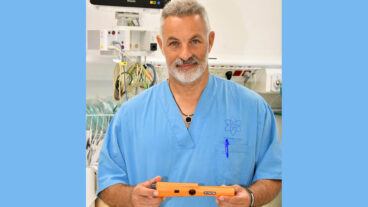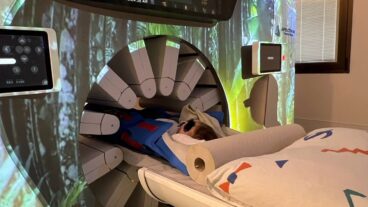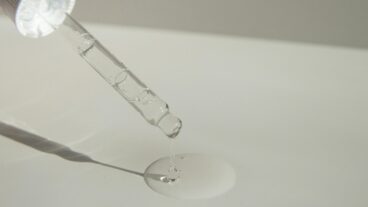OrthoMechanic’s novel SHS design is a double-edged anchor fixed to the bone in such way as to hold the broken parts in their original position until the body heals. The good news is we’re living longer. The bad news is our bones are getting more brittle.
The incidence of hip fractures requiring fixation surgery is steadily increasing in the Western world, chiefly due to osteoporosis (decrease of bone mass). In the US, 300,000 hip operations are reported each year, most of which involve female patients. And experts believe that due to the increase in life expectancy these figures will double by 2050.
Presently, about one out of every six American women will suffer a hip fracture, mostly after the age of 50. Nearly every case requires some form of surgery to return the patient to a maximum level of functioning. However, the operations are not foolproof, according to Nimrod Meller, the CEO of Israeli startup OrthoMechanics which has developed a new technology to remedy the situation.
“The problem is that nearly 10% of these operations fail. The screw that is implanted into the fractured bone breaks out, resulting in additional surgical interventions, restricted movement, loss of independence, and a much lower quality of life,” said Meller, 31, a mechanical engineer by profession.
OrthoMechanics’ solution for fixation of broken bones, specifically the hip, is based on a novel creation invented by fellow Israeli Avraham Shekalim. His Spatial Hip Screw (SHS) is intended for treating fractures of the proximal femur, commonly referred to as ‘hip fractures’.
Until now, hip fractures are generally treated by systems of plates and hip screws, or intra medullary nails and hip screws, connecting the femur to the capsule.
“It’s actually much like simple carpentry, with simple mechanical devices,” Meller told ISRAEL21c. “Our process is more sophisticated.”
The patented SHS stabilizes the pin inside the capsule by means of anchors expanding distally and proximally to form a spatial structure inside the capsule, in addition to the generic screw – or doing without it completely, simplifying the procedure even further.
“Our SHS solution provides more reliable bone fixation. Our innovative pin is inserted into the head of the broken bone and locked onto the bone walls with mechanical clips that open when insertion is complete. We’re introducing a product designed to replace the screws that are currently used, improving performance significantly and preventing a situation in which the screw rotates or breaks out of the bone,” explains Meller.
Hipbone fractures are commonly treated with surgical procedures that can be divided into two types, depending on the type of fracture. In the first type, the head of the femur is replaced with a metal implant and leads to partial or total hip replacement. The second, which pertains to more than 50% of the cases, requires that the fractured bone be reconstructed and fixated with nails and screws.
OrthoMechanics has devised an ostensibly simple solution to address the second type of procedure. To ensure fixation and to facilitate rotation, the company’s novel SHS design is a double-edged anchor fixed to the bone in such way as to hold the broken parts in their original position until the body heals. Tests conducted at the Technion in Haifa have proven that this unique patent-pending system performs better than current solutions and avoids the too common problem of fixations that fail, which necessitates recurring, complex operations.
According to OrthoMechanics, often the failures can be attributed to the screw itself.
Meller elaborates: “The screw inserted into the bone protrudes and breaks into the hip joint. Being extremely weak itself, the bone cannot provide support. Our SHS product is designed to prevent this situation. Thanks to the mechanism we developed, the clips lock into the spongy bone cavity, reduce the relative movement between the implant and the bone, and prevent the pin from breaking out. As a result, another unique property of the product is its ability to resist rotation damage.”
“The bone is organic material – if you put a simple screw lock in place which cannot retract, the bone will grow around it, fill in the mechanism and then you’ll never be able to get it out. Our device can be retracted at any time. And it’s also very stable, holding firmly inside the bone,” he added.
Meller credits the idea for the SHL to Shekalim, a veteran engineer in the field of medical devices. Shekalim claims to have 15 registered patents to his name “and about 15 in development,” he says.
“There are those that call me a serial inventor, but I don’t know if that’s necessarily true. It’s with difficulty that I invent at all,” Shekalim told ISRAEL21c. “Actually, I’m of the opinion that it’s not a problem to invent, but to do something with the invention so someone can actually make use of it is the problem. But at the same time, that’s the satisfaction.”
Shekalim has managed to bring a number of devices to market, but they haven’t always been so successful.
“I invented an electronic toothbrush that has a variety of brushes to choose from. I thought it would be very appealing, but it didn’t really catch on,” he said. But he’s confident the SHS is going to make a difference.
“The SHS actually wasn’t a case of waking up one morning and going ‘Eureka – I have an idea!’
Instead, I was working with a company as head of the medical devices department, and they came to me with the problem and asked for a solution. What happens is as an inventor, you forget about the problem but the brain subconsciously continues to think about it. Generally in our profession, things don’t work in an ABC order, but this was a special case… it went much like we thought. It’s very surprising, it’s not usually like that,” he said.
Shekalim left that company, but was encouraged when Orthomechanics was founded to commercialize the idea. He’s not involved with the company on a regular basis, but sits on its board of directors.
“In my professional career, I’ve encountered many problems involving fixation of fractured bones. We know this is a complex task. We’ve decided to focus on a specific field and develop a dedicated solution. I think we’ve created a good product with the potential to reach the market and significantly improve the quality of life for many patients,” he said.
For Orthomechanics’ Mellor, the task now remains to complete the development, conduct clinical tests, and receive FDA approval to market the device in the US. Established in 2003, the company is based at the Misgav Technology Center in the Galilee.
He expects a relatively short path to market. Since the SHS product is a medical device that provides solutions to specific problems in existing products, the pathway to obtaining FDA approval is shorter, thereby enabling the company to commence sales sooner – directly to American hospitals.
“We expect to be able to test the device on patients next year, and receive FDA approval by the end of 2006. It’s all dependent on fundraising or finding a strategic partner,” he said.












